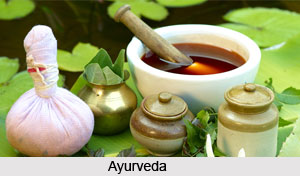 In the first two decades of the 19th century Ayurveda was taught in a traditional way. The British rulers did not bother much as the British East India Company employed their English doctors. They remained indifferent towards the health and physical condition of the Indians.
In the first two decades of the 19th century Ayurveda was taught in a traditional way. The British rulers did not bother much as the British East India Company employed their English doctors. They remained indifferent towards the health and physical condition of the Indians.
The British hospitals employed few Indians as `subordinate health-workers.` The Indians who possessed high skills in medical service served at regiments and civil stations under the name of `native doctors`. Slowly the demand for medical service increased; hence in 1822 the Calcutta Native Medical Institution was established. It was set up under the supervision of Jamison, Breton, and Tytler.
Earlier the British rulers tried to popularise the western medical science among the Indians but the rising demands for indigenous medicines forced them to built medical colleges. They established the Sanskrit College in 1824. Here the prospective doctors were given training in Indian medicines. Ayurvedic classes were also introduced in Sanskrit College in 1827. Professors gave lectures on both Indian and western medicines. Dr. Tytler was one of the professors of the college. Lectures on classical texts of Ayurveda were also given. However, this friendly co-existence of European and Indian medicine did not last for a long time.
In 1935 the ayurvedic classes in Sanskrit College was discontinued under the advice of Lord Macaulay. A new medical college was established in West Bengal where European medicine was the only recognized system of medical study. Dr. Tytler and Dr. Jamison tried hard to curb their actions by sending their famous Memorandum to the Educational Secretary of India. They however, did not succeed in their mission.
The British in order to accomplish their mission started granting free studentship and scholarship to the students. They also gave free of cost medical training materials, such as books, charts and models etc. The government supported the students who chose the European system of medicine.
Students who passed the final examination of the Medical College successfully obtained certificates and were designated as native doctors. They were regarded as the first class of `Native Doctors`. The second class was accorded to the students who passed from the Calcutta Native Medical Institution and the third class was those who had got their training in the British Hospitals. Thus, the growth and development of Indian medicine was restricted during this period. It was thought that the allopathic medicine would soon replace the traditional Indian medicine. During this crisis period Kaviraj Gangadhara Roy, a well known Indian personality lifted up the position of ayuryedic medicine in West Bengal.
Development of Ayurveda in British Period
Ayurveda was elevated to its prestigious position by the vital contribution of Kaviraj Gangadhara Roy. Throughout the 19th century and also in the first two decades of the 20th century, he worked hard for the development of ayurveda. He worked as an ayurvedic physician and also established a medical school to impart education to students from different parts of India. He earned popularity for his skill in the therapeutic use of medicine. His commentary on Charaka Samhita named as Jalpakalpatar was one of his vital contributions. He elaborately studied the Indian medical system and sent them to different parts of Bengal and India. Ganga Prasad Sen, a junior contemporary of Gangadhara Roy also contributed significantly for the growth of ayurveda. He was from Kumartulle in Calcutta (now Kolkata). Gangadhara Roy fought for the cause of Ayurveda outside Kolkata while Ganga Prasad Sen tried to compete with western medicines in the market. The later also edited several ayurvedic journals, made Ayurvedic medicines at home and sold them to the general public.
India passed through a phase of national awakening from 1920. Several schools, colleges and universities were established that imparted education on ayurveda. Several ayurvedic scholars and practitioners also came forward for the development of indigenous medicine. Many committees such as Chopra Committee, Osman Committee etc., were formed to suggest ways and means for national improvement.
After India`s independence in 1947, the Government of India, as well as the state governments, allotted funds to boost up research work in ayurvedic medicine. State dispensaries and hospitals were also established in the districts.





